How to Ride a Bike with Good Posture (Part 1)
Most people, when they ride a bike, tuck their pelvis so the rear portion of their sitz bones rests on the seat. Then they lean over to reach the handlebars causing a lot of spine curvature. With the additional tension created from pushing the pedals and holding the handlebars, and the bouncing and jostling from the road, riding a bike this way can be a painful and harmful activity.
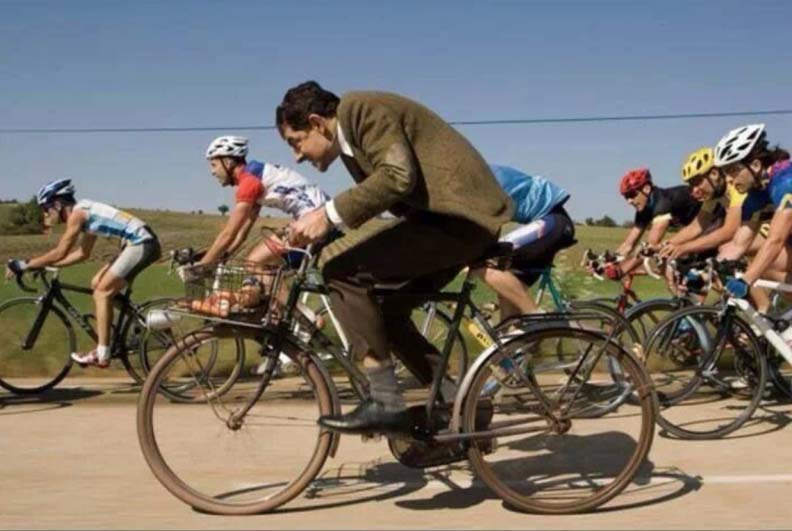
Many modern bike riders look like Mr. Bean when they ride a bike, sitting with an unnaturally curved spine.
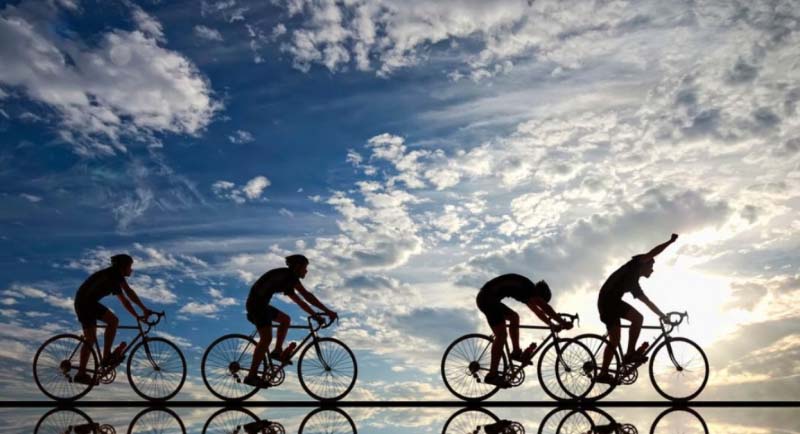
Each of these modern-day bikers has a rounded spine and craned neck. Image courtesy John Matrix at bikelist.org.
With a few adjustments, riding a bike can be a harmonious and healthful activity. By using hiphinging and stacksitting, and by making sure you have the right bike and the right settings, you can enjoy this way of exercising and getting around. Here are the key things to look for in a bike frame:
Bike style: In some areas, road bikes and touring bikes—styles that require a deep bend to reach the handlebars—are very common. In other places, cruisers, hybrids, and flat-foot ‘comfort bikes’ are the norm. Pick a style that works best for you, but if you experience back pain, an upright model will likely more comfortable and conducive to good posture.
An additional advantage of an upright bike is that you won’t need much hamstring flexibility and back strength to maintain a J-spine. An upright bike allows you to stacksit on your seat with an easily maintained healthy neck position.
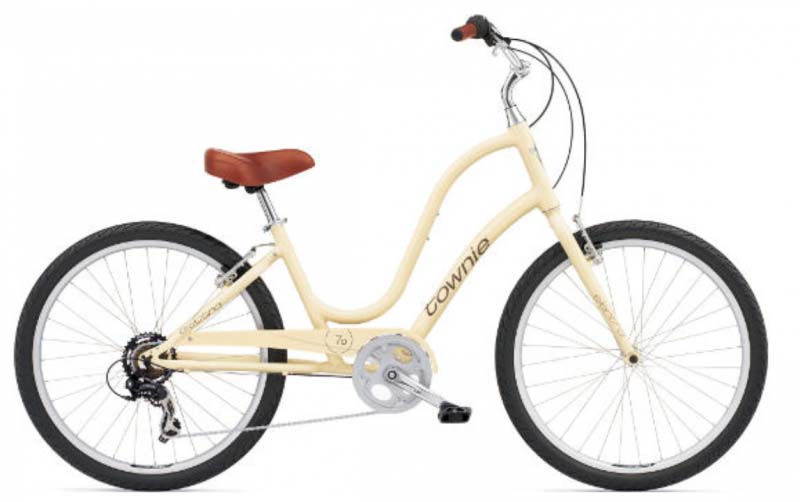
This comfort cruiser is ideal for maintaining a relaxed upright posture. It also has a low bar in the front that makes getting on and off the bike easy.

Shailene Woodley rides a bike with close-swooping handle bars, which make it easy to ride upright with the shoulders back.
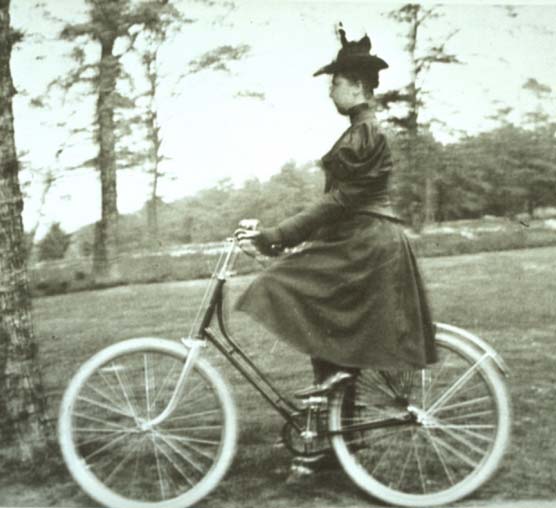
This woman from yesteryear demonstrates an excellent J-spine on a ‘comfort’ frame that allows her to stacksit and easily keep her shoulders back.
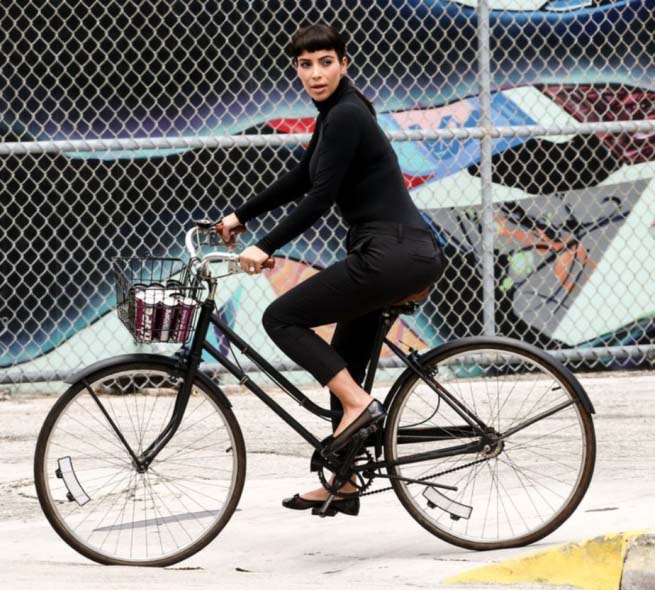
Here Kim Kardashian rides an upright with cruiser handlebars. With a slight hiphinge, she is able to maintain healthy spine and neck alignment. This position doesn’t require great hamstring flexibility; it does requires slightly more work than stacksitting.
For those who prefer a more aerodynamic racing style, you will need to do a deep hiphinge. It can be challenging to find a seat that allows for appropriate and comfortable pelvic anteversion. I will write more about bike seats in an upcoming sequel post.

To get closer to a racing position with your torso more horizontal, you will need a pronounced hiphinge to maintain a straight spine. This woman hiphinges quite a bit, but stops short of ideal and therefore has a slightly rounded lumbar spine. Ideally, you pivot your head upwards on the neck rather than crane the neck to look ahead (more on this in a future post).
Frame size: For good bicycling posture, you will need an appropriately sized bike frame that allows you to maintain a relaxed shoulder and neck position, and allows you to touch your feet to the ground from your seat. The handlebars need to be within reach without your shoulders pulling forward.
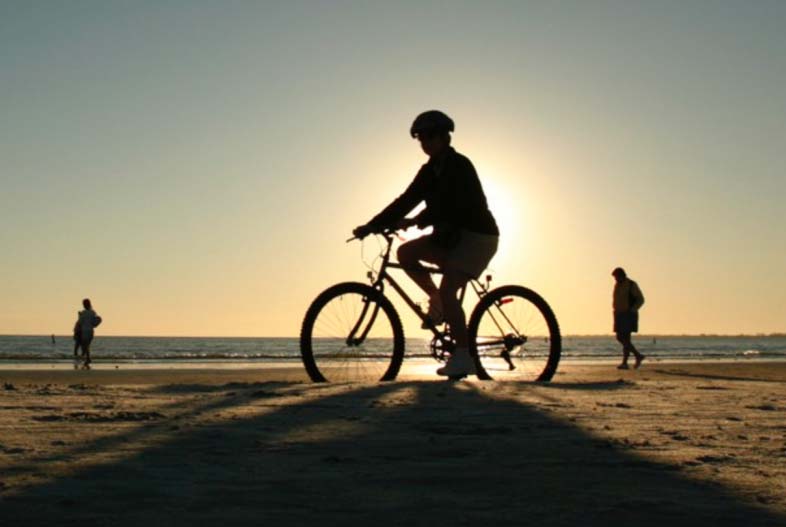
With a little effort, you can find just the right size and style frame to keep you straight and pain-free!
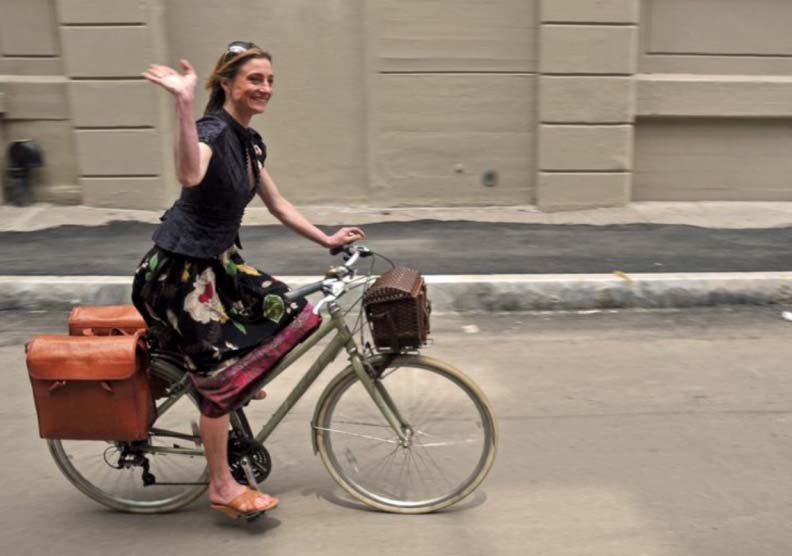 With With good posture and a good bike fit, biking is a pleasure to observe and experience.
With With good posture and a good bike fit, biking is a pleasure to observe and experience.
The more upright you can be on your bike, the less work you will have to do to maintain your J-spine.
 Children often maintain a J-spine on bikes without too much trouble. Children’s bikes are rarely designed for aerodynamic racing, but rather for ease of learning on.
Children often maintain a J-spine on bikes without too much trouble. Children’s bikes are rarely designed for aerodynamic racing, but rather for ease of learning on.
A frame that is too small can cause you to scrunch up, tuck your pelvis, and round your spine. A frame that is too large can pull your shoulders too far forward to reach the handlebars. When your handlebars are in the wrong place and you rest a lot of weight on them, you may create shoulder and neck tension from bracing yourself continuously.
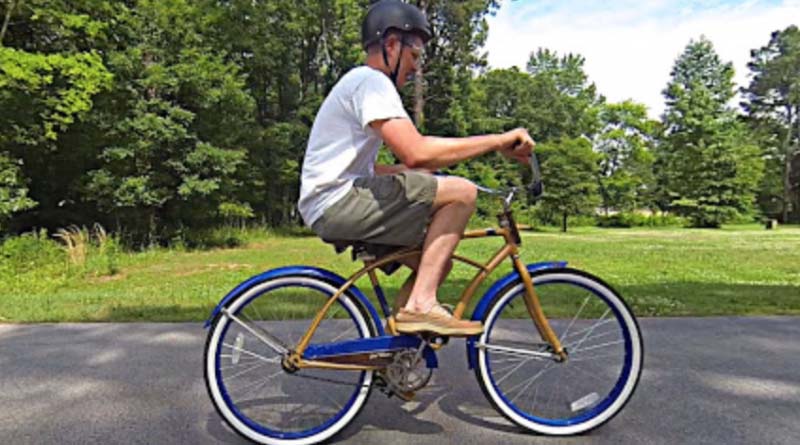
This rider’s bike is too small for him, resulting in a tucked pelvis and rounded spine.
If you are exceptionally tall, you may find it difficult to find a frame that is tall enough to fit you. If you need to lift your seat to its max to create enough legroom for yourself, consider also lifting your handlebars. There are extensions that can be attached to the stem of the handlebars, to bring them closer or farther away, as well as to add height. Your frame needs to be long enough to comfortably reach between seat and handlebars without hitting your knees or scrunching your torso.
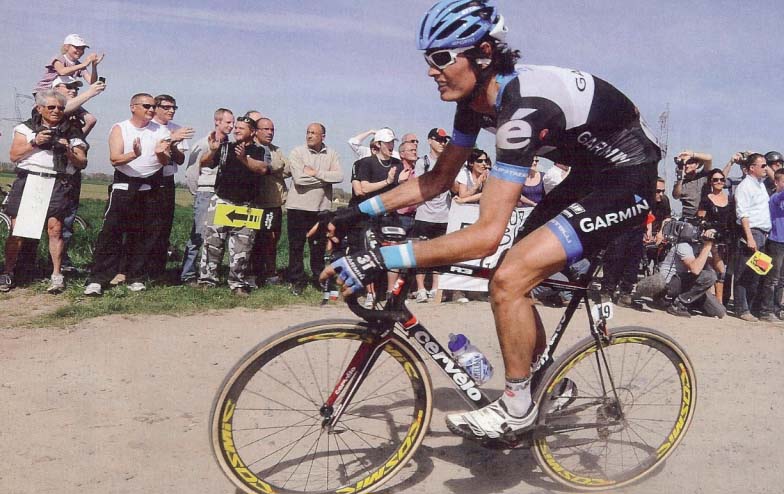
This tall rider is having trouble fitting onto a too-small frame—the distance between the handlebars and seat is too short for his torso to fit without buckling at the spine.
For smaller-than-average adults, it is sometimes difficult to find a petite frame that allows you to lower the seat enough to reach the ground, without this causing the handlebars to be uncomfortably out of reach. Again, there are adjustable stems available for handlebars that are shorter than average, or can tilt the handlebars closer to you. With many bike seats, you can also adjust the seat position horizontally, and it may be easier to slide the seat closer to the handlebars than to bring the handlebars closer to the seat. Just make sure that your seat isn’t so far forward that pedaling becomes awkward or uncomfortable.
How well does your bike fit you? What has your experience been riding different kinds of bicycles? How good is your posture when you ride? Please do share!
Join us in an upcoming Free Workshop (online or in person).
Find a Foundations Course in your area to get the full training on the Gokhale Method!
We also offer in person or online Initial Consultations with any of our qualified Gokhale Method teachers.

Comments
I have loved bicyling for
I have loved bicyling for many years, but started getting numb hands a few years ago with a traditional road bike. I tried various fixes, including padded gloves, higher handlebars, bar ends, ergonomic grips, and various bikes, including a Tour Easy recumbent and a Townie cruiser. My final solution was a crank-forward, semi-recumbent bike called the Rans Fusion. The ccombination of the Gokhale training, so I knew what position to look for (and how it feels) and finding the right bike for me has eliminated my numb hands and restored my ability to ride in comfort. Don't give up, it is possible! Steve Quigley of San Jose, CA
Great to hear!
Great to hear!
Deat Esther,should the knees
Deat Esther,
should the knees be rotated outwards? I also noticed that it reduces the strain on my knees if you are placing just the heels on the pedals rather than the front feet like it is normaly advised.
Would love to hear your thoughts on this.
Thank you,
Martin
Add New Comment
Login to add commment
Login